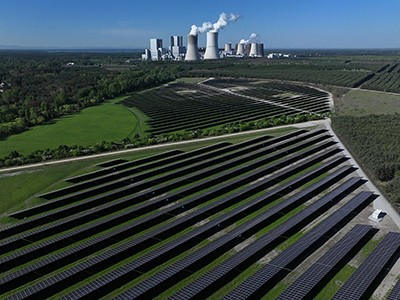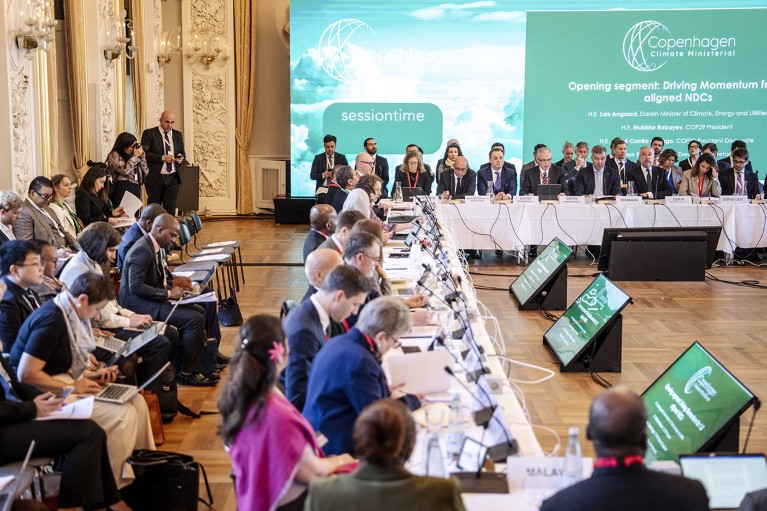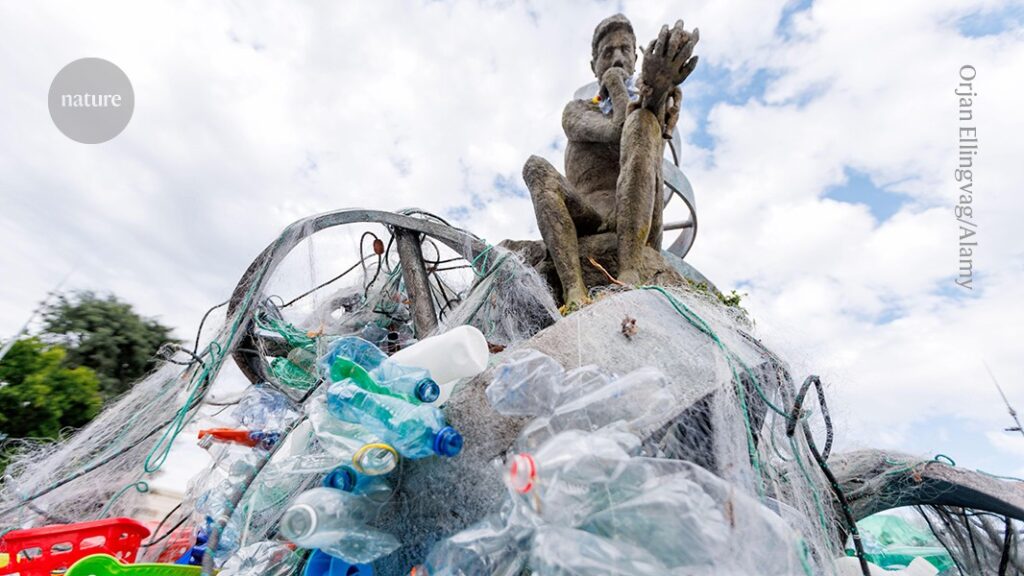On 15 August in Geneva, Switzerland, a fifth round of negotiations towards a multilateral treaty on reducing plastic pollution collapsed. The chair announced that the committee had concluded its work — without producing a draft treaty. Governments had failed to agree on the proposed articles of the convention; no further negotiations were being suggested.
This failure reveals a weakness in all environmental treaty negotiations, whether new or existing ones: a consensus-driven process waters down action to the lowest common denominator. Only symptoms get addressed, not causes.
Heatwaves linked to carbon emissions from specific companies
The result is much action without impact. Yet this ineffective method continues — a situation we characterize as ‘institutional paralysis’. What’s needed is to make international organizations capable of imagining and doing things differently. That requires more research on politics and governance, and that institutions make better use of the knowledge generated by that research.
To overcome this paralysis, at least in the environmental arena, we propose establishing a standing process, mandated by governments, to evaluate the state of global environmental treaties and related bodies. Its role would be to assess their fitness, both individually and collectively; identify what is and is not working and why; and provide actionable recommendations to the United Nations for reforming them.
Frozen institutions
International environmental institutions resemble deer frozen in headlights: acutely aware of an impending crisis, yet incapable of meaningful movement. The UN Framework Convention on Climate Change elevates urgency, but even implementing its current pledges fully would fall short of avoiding dangerous climate change1. The Convention on Biological Diversity sets ambitious conservation targets for protected areas, yet expanding the zones offers little defence against an intensifying local and global extinction of species caused by climate change2.
These are not merely failures of ambition. They are design flaws. The implementation of existing policies, however robust, is insufficient to confront the scale and complexity of today’s polycrisis3.

States now have a legal duty to prevent climate harm — justice is in reach
The result is institutional paralysis: a persistent incapacity of environmental institutions to act, adapt or achieve stated objectives despite sustained procedural activity. Like the Red Queen in Alice through the Looking Glass, paralysed institutions run in place just to stay put. Trapped in cycles of action without impact, movement persists but purpose dissolves.
The rational response to paralysis would be to acknowledge it and seek support. Yet most institutions resort to symbolic gestures to maintain the appearance of relevance. In July in Zimbabwe, after months of discussions, the Ramsar Convention on Wetlands agreed on a strategic plan that mostly reaffirmed 20-year-old decisions. The International Whaling Commission projects the illusion of progress, framing resolved issues such as widespread whaling as ongoing to justify the body’s continued activity4.
Others choose to gamble. The London Convention and its 1996 Protocol on marine pollution have opened the door to marine geoengineering, including fertilization of the ocean with iron to stimulate phytoplankton growth and, increasingly, measures to enhance ocean alkalinity to increase carbon dioxide absorption5. Although such interventions would carry huge, clearly identified risks to the marine environment, they are still being considered as potential responses to climate change.
This reflects a broader dynamic: institutions are navigating trade-offs between various risks, in ways that endanger the very object that they seek to conserve, and undermine their own effectiveness in saving it.
Diagnosing institutional paralysis
Institutional paralysis arises when organizations are confronted with circumstances that exceed their original purpose, authority or capability. Take, for example, climate change. Today’s climate is in much worse shape than when the UN Framework Convention on Climate Change was adopted in 1992, arguably exceeding the body’s capacity to manage responses. Scientific knowledge about our planet is abundant and expanding and institutions are increasingly overloaded with information.

Why the green-technology race might not save the planet
Groups of scientists have tried to issue ‘warnings to humanity’6, but after initial brief attention, the warnings go unheeded. And concerns are spiralling faster than UN conventions can keep up with. For example, the study of climate change involves not only the natural sciences, but also, increasingly, social sciences — adding further angles, such as justice, to the discussions7. Yet deteriorating social issues are an outcome of the acceleration of global warming, which further stretches the climate agenda. Ineffectiveness then breeds more problems, while resources remain stagnant. As a result, public confidence in the climate convention erodes, reinforcing the sense of paralysis.
Already-overburdened institutions are also strained by accelerating anthropogenic pressures that fall outside their mandates. Today, much of this spillover stems from climate change8. For example, the World Heritage Convention lists 51 marine sites in its protected areas, including 29 coral reefs — which looks good on paper. However, it lacks the authority to address climate-driven threats to coral reefs, such as ocean warming and acidification. Although there is a great deal of science available to assist with evaluating impacts on heritage, geopolitical realities hold more sway on which sites are accepted and added to the list9.
The complex reasons why institutions tread water are revealing. Limited capacity is one factor. Most international environmental institutions are chronically under-resourced10. Climate change is often more politically salient than biodiversity and tends to receive most of the funding11. For example, the Cali Fund for supporting the sharing of genetic resources, which was launched amid excitement in February at the resumed 16th biodiversity Conference of the Parties (COP16) in Rome, is struggling to reach its targets.

Ministers met in May to set directions for negotiations at COP30 in Brazil in November.Credit: Mads Claus Rasmussen/Ritzau Scanpix/AFP via Getty
Geopolitical dynamics further exacerbate the problem of fundraising for the conventions, and tend to favour climate over biodiversity, despite the nexus between them. The behaviours of major powers such as the United States, Russia, China and the European Union shape outcomes of multilateral negotiations. Sometimes, countries with economies that rely heavily on oil and natural gas act as deliberate blockers. Contestation between countries with different socio-economic and political circumstances also deepens institutional paralysis.
Even when they lack capacity and resources, most institutions continue to project an image of progress and preserve the appearance of hope rather than acknowledge failure and close. Like all entities composed of people, they are inherently political. Admitting the failure of institutions into which so much has been invested, without viable replacements, is seen as carrying too great a political (and psychological) risk.
Many institutions are also entrenched in the ecomodernist paradigm12; they often choose to pursue technological fixes, such as carbon capture or extensive monoculture afforestation, as the path of least resistance. Yet such fixes often lead to more problems.

